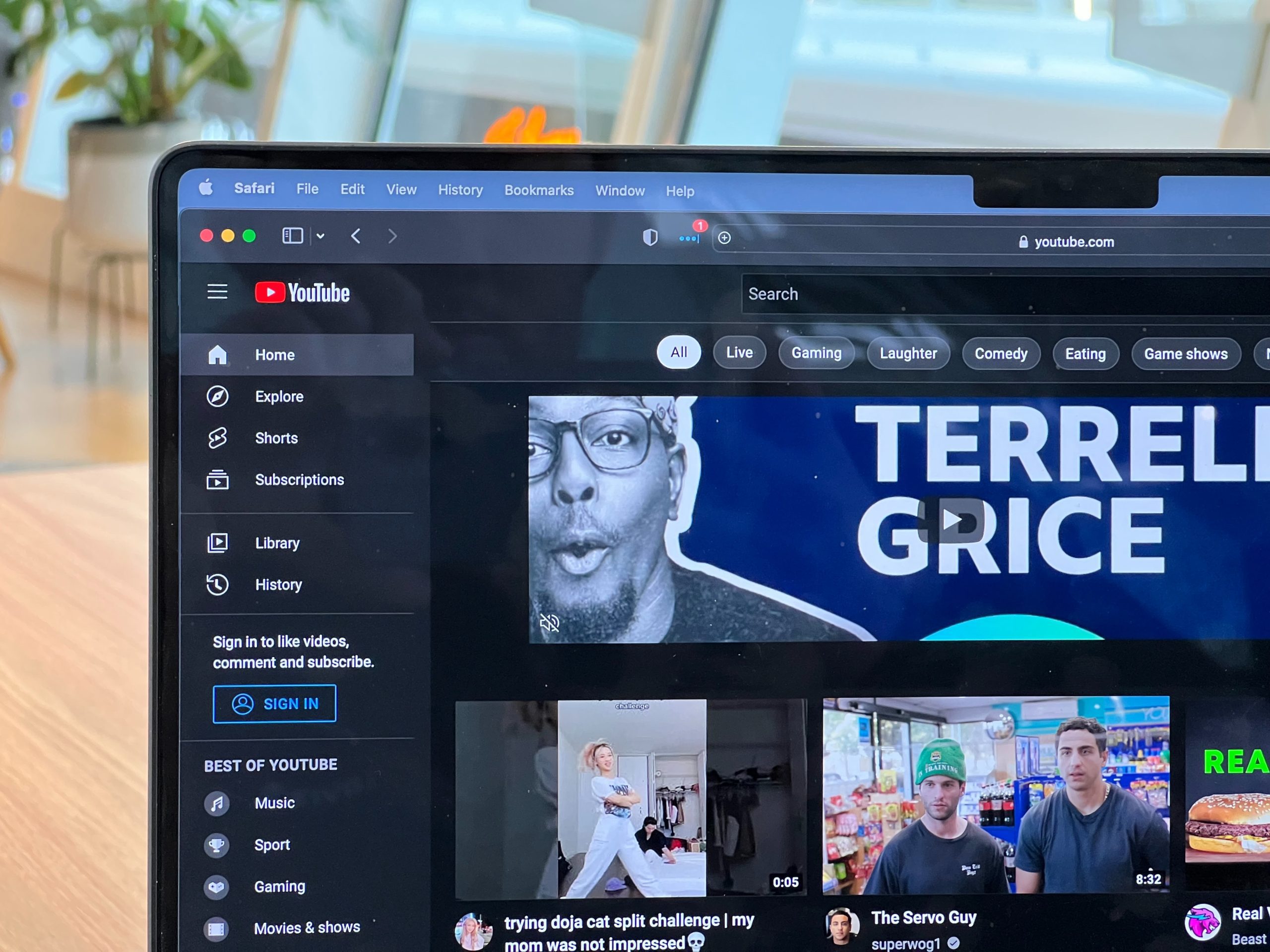
10 Top Tips For Creating SEO-friendly Content
SEO. It’s an acronym we constantly hear in the digital marketing world, and with good reason.
Online content with SEO at its heart is a powerful tool for generating organic website traffic – in other words, being seen by audiences relevant to your business.
After all, the acronym does stand for search engine optimisation. In simpler terms, that means appeasing Google. It’s the only search engine that really counts.
So what are the 10 top tips for creating SEO-friendly content?
Well, there’s much more to it than just chucking in keywords haphazardly and expecting to attract more eyeballs to your pages than those fixated on a hotshot influencer’s latest social post.
In fact, some tick-box items have little to do with the audience-facing elements of your content.
Here are a few key pointers to give your website pages the best chance of being seen.

SEO – it’s an important acronym to be across. Credit: Nisonco PR and SEO on Unsplash.
1. Note the Basics of SEO
Before we dive in, it’s important to remember that if the overarching objective of a search engine is to provide users with the most relevant and useful search results, your content should reflect that aim.
It’s almost pointless optimising web pages for terms that no one is searching for.
Additionally, it’s important to understand that SEO relates to web pages rather than websites.
Each web page presents an opportunity to rank on search engine results pages – therefore benefitting your website as a whole – and should be treated as a unique prospect.
2. Do Your (Keyword) Research
We’ve identified that the point is to have your content appear on search engine results pages for specified targeted search terms and phrases. But how do we know what people are looking for?
Leading online tools such as Google Keyword Planner, Semrush, and AnswerThePublic are excellent starting points.
Each has free components (as well as paid ones) that allow you to research and identify popular search terms, including those that companies – possibly your competitors – are bidding on.
Scanning competitor pages and noting search engine suggested phrases are other helpful ways to identify relevant search terms.
However, aim to target only two or three keywords per web page at most, which fundamentally will be subtle variations of each other. It’s more likely that pages will rank if they focus on a singular topic, so even one keyword can be adequate.
Pro tip: Targeting lower-competition keywords is a sound tactic for trying to get ahead of your competitors.

Keyword research is a crucial piece of the SEO puzzle. Credit: Christin Hume on Unsplash.
3. Make Search Terms Work Harder
Once you’re armed with a relevant search term, it’s important to make the most of the potential pot of gold at your fingertips.
Be sure to include your sole or main search term in the heading of your content or article as well as its subheadings, page or body copy (ideally at the beginning of paragraphs), and images (filename and alt text). This all adds to a page’s keyword density, increasing its value to Google.
A key tip is to ensure the search terms sound authentic and natural rather than forced. You can get a gauge for authenticity by reading the content out loud to yourself.
Also, avoid ‘keyword stuffing’, as Google has the ability to identify and penalise excessive use of phrasing and search terms. Again, authenticity is important.
It’s also helpful to know that keywords can be ‘bridged’, as Google ignores punctuation.
For example, if your search term is ‘accounting services for small businesses’, you could theoretically write the following sentence and it would have currency in the search-ranking world:
‘We are the leaders in accounting services. For small businesses, we recommend…’
4. Don’t Overlook Meta Tags
Meta tags – snippets of text that summarise each web page – should not be undervalued. They play a critical role when creating SEO-friendly content, as they are highly prized by Google.
Pay particular attention to the title tag and accompanying meta description or page description tag. These should be unique to each page and include the target keyword. It’s recommended that title tags are limited to no more than 65-70 characters and the page description tag to 150 characters.
Such tags should also summarise what your content is all about. Easy identification is helpful for both search engines and the reader.

Paying attention to meta tags creates more chance of getting noticed by Google. Credit: Firmbee.com on Unsplash.
5. Embrace Long-form Content
Yes, yes – shrinking attention spans. Time-poor societies. Readers only vaguely scanning copy. It’s all true, but Google doesn’t really care.
The search engine loves long-form content – well, quality long-form content at least. Google often rewards this content via higher rank, as it likes to give readers all the info they need in one handy place. Plus, it notes how long a reader engages with a page, so the longer, the better.
As a guide, content sitting at 700-1000 words is ideal, although there is a place for articles of more than 2000 words. At a minimum, content should be at least 300 words long.
6. Pay Attention to Structure
Word count is only part of the story. Content needs to be relevant, and article structure is important. This is not only true for Google’s appetite but for that of the reader – after all, you want the content to be engaging in the hope of leading to reader action or conversion. Key priorities include:
- A single H1 (main heading) featuring the strongest keyword phrase or term
- Repetition of that phrase in the article’s intro
- Addition of supporting keywords or phrases in H2s and H3s and body copy
- Short and relevant URLs
- Relevant internal and external or inbound links (anchor text)
- Quality imagery with keyword captions and alt text (additionally, imagery makes the content more scannable and digestible for the reader).

Do it right, then watch the clicks come in. Credit: Daniel Tomlinson on Unsplash.
7. Chase Backlinks to Create SEO-friendly Content
Backlinks – a link from another website to your own – can be SEO gold. To Google, they signal a vote of confidence for your content from an outside source, particularly if the external site is ‘trusted’ and has high authority.
Quite simply, you can’t ever have enough backlinks, so they are worth chasing. There are several ways to proactively receive backlinks, including link exchanges with partners, suppliers, sponsors, and other contacts, inclusion within press releases, or via blog commenting.
However you chase them, obtaining backlinks can play a crucial part in increasing the rank of your content.
8. Mix It Up!
Of all the 10 top tips for creating SEO-friendly content, this one is perhaps the most overlooked. Articles, videos, blog posts, press releases… they all help to increase a page’s SEO value. Don’t be afraid to create different forms of content.

SEO does not just apply to blogs and other written content. Credit: Oberon Copeland @veryinformed.com on Unsplash.
9. Remember That SEO Rules Change
Search engine algorithms are constantly altering and they aren’t at all uniform, so it pays to stay informed of any updates.
This includes noting when online articles were published if you’re using these resources to help create SEO-friendly content. The more recent an article, the more likely it is deemed to be relevant.
10. Be Patient
It can take months for content to rank, so hold tight! Google Search Console is a great tool to ascertain the search value of your content, and it’s free to use.
Do not duplicate content in the hope that this might magically help content rank quicker or improve ranking. Google penalises such a practice – it doesn’t need redundant content in its overflowing index.
Lastly, don’t forget SEO is only one piece of the ever-evolving marketing landscape. Sound optimisation tactics won’t generate more interest in your business on their own, or nullify poor marketing elements. It is merely a part of the bigger picture.
Creating solid email campaigns is just as important.

Be patient. It can take time to get Google’s attention. Credit: Bastian Riccardi on Unsplash.
Top Tips for Creating SEO-Friendly Content – Where to From Here?
Hopefully with these 10 top tips for creating SEO-friendly content, you’re ready to grab Google’s attention – and that of your audience.
However, if you need a guiding hand with your SEO practices or any other element of your website and its content, simply drop us a line at hello@huntandhawk.com. We’re always here to help.





